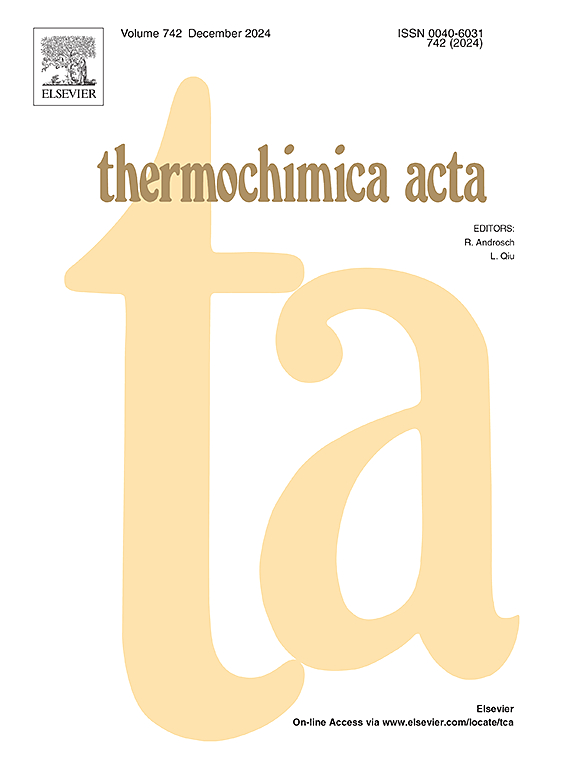N-(4-羟基-3-甲氧基苄基)壬胺的热解行为及机理研究
IF 3.1
2区 化学
Q2 CHEMISTRY, ANALYTICAL
引用次数: 0
摘要
N-(4‑羟基-3-甲氧基苄基)nonanamide (PAVA)作为一种辣椒素在医学、海洋工程和防暴控制等领域有着广泛的应用。研究其热稳定性和热分解性能对于评估含pava产品的使用寿命、优化其效率以及评估分解产物的毒性至关重要。本研究采用热重/差示扫描量热-傅里叶变换红外光谱(TGA/DSC-FTIR)和热解-气相色谱/质谱(PY-GC/MS)技术研究了PAVA的热解行为。在大约335.15 K(62°C)处观察到熔化吸热,外推的开始分解温度为534.15 K(261°C),与热分析实验中的升温速率有关。PAVA热分解最可能的机理函数为G(α)=[(1+α)1/3 - 1]2。热热解结果表明,在好氧环境下,只有在923.15 K(650℃)以下发生热解反应,在523.15 K(250℃)~ 623.15 K(350℃)之间发生热解反应。本文章由计算机程序翻译,如有差异,请以英文原文为准。

Study on pyrolysis behaviors and mechanism of N-(4-hydroxy-3-methoxybenzyl)nonanamide
N-(4‑hydroxy-3-methoxybenzyl)nonanamide (PAVA) exhibits a broad spectrum of applications as a capsaicinoid in fields such as medicine, marine engineering, and riot control. Investigating its thermal stability and thermal decomposition properties is crucial for assessing the service life of PAVA-containing products, optimizing their efficiency, and evaluating the toxicity of the decomposition products. In this study, thermogravimetry/differential scanning calorimetry-Fourier transform infrared spectroscopy (TGA/DSC-FTIR) and pyrolysis-gas chromatography/mass spectrometry (PY-GC/MS) techniques were employed to investigate the pyrolysis behaviors of PAVA. A melting endotherm was observed at approximately 335.15 K (62 °C) and the extrapolated onset decomposition temperature was determined to be 534.15 K (261 °C) related to the heating rate in thermal analysis experiments. The most probable mechanism function for the thermal decomposition of PAVA was identified as G(α)=[(1+α)1/3–1]2. Furthermore, thermal pyrolysis results indicated that only pyrolysis reactions were found below 923.15 K (650 °C) under an aerobic environment, initiating between 523.15 K (250 °C) and 623.15 K (350 °C).
求助全文
通过发布文献求助,成功后即可免费获取论文全文。
去求助
来源期刊

Thermochimica Acta
化学-分析化学
CiteScore
6.50
自引率
8.60%
发文量
210
审稿时长
40 days
期刊介绍:
Thermochimica Acta publishes original research contributions covering all aspects of thermoanalytical and calorimetric methods and their application to experimental chemistry, physics, biology and engineering. The journal aims to span the whole range from fundamental research to practical application.
The journal focuses on the research that advances physical and analytical science of thermal phenomena. Therefore, the manuscripts are expected to provide important insights into the thermal phenomena studied or to propose significant improvements of analytical or computational techniques employed in thermal studies. Manuscripts that report the results of routine thermal measurements are not suitable for publication in Thermochimica Acta.
The journal particularly welcomes papers from newly emerging areas as well as from the traditional strength areas:
- New and improved instrumentation and methods
- Thermal properties and behavior of materials
- Kinetics of thermally stimulated processes
 求助内容:
求助内容: 应助结果提醒方式:
应助结果提醒方式:


